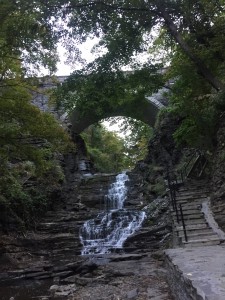Gregory Page, Professor for Cornell’s Introduction to Print Media class, decided to take a unique route in his curriculum last year, challenging his students to think creatively while incorporating natural elements into a form of print media. Their assignment was to take inspiration from a recent trip to Cornell plantations and display their characteristics and qualities into art. These students took creative liberty in delivering their own views and interpretations on the beautiful vegetation that they had encountered, while accenting their more devious element of poison.
The exhibit itself only displayed a few of the pieces created but even still, it truly helped to instill in me a greater appreciation for print media. With various methods of overlaying photographic or sketched/hand-drawn mediums, the images and prints created a deeper meaning into the innocent facade of such plants. For example, Mandragora depicts what I assume to be a Mandrake plant overlaid on top of several faces. This piece alludes to the hallucinogenic effects of Mandrake poisoning and its use as a narcotic.Tachychardia, on the other hand has a less obvious interpretation. The first impression is of a woman napping on top of a plant, leading to the viewer to assume the narcoleptic properties of this plant. However, the title, whose definition indicates a rapid heart beat, seems contradictory to the events of the print. Rather than displaying a nerve-wracked individual often associated with increased heart rate, the piece shows a peaceful woman asleep. On a side note, the piece Levitate incorporated a chemical molecule which really peaked my nerdy organic chemistry interest. The pieces had their own unique characteristics to display the varying viewpoints of the students towards these rare, poisonous plants and I applaud the creative success they had in portraying their perspectives.




